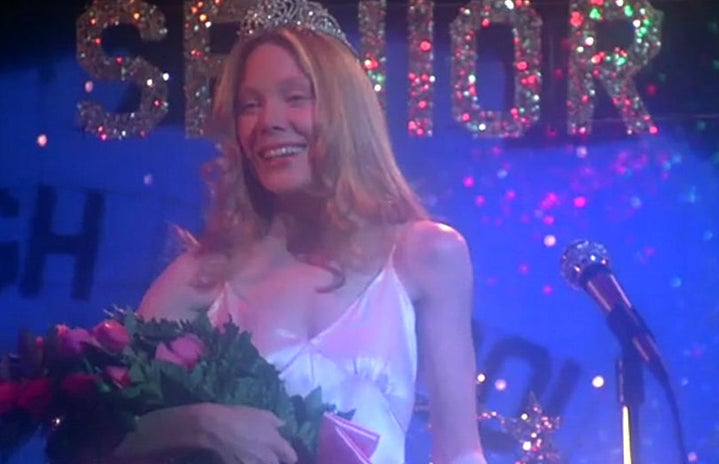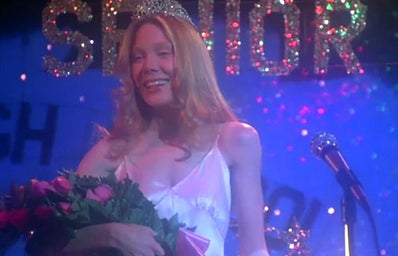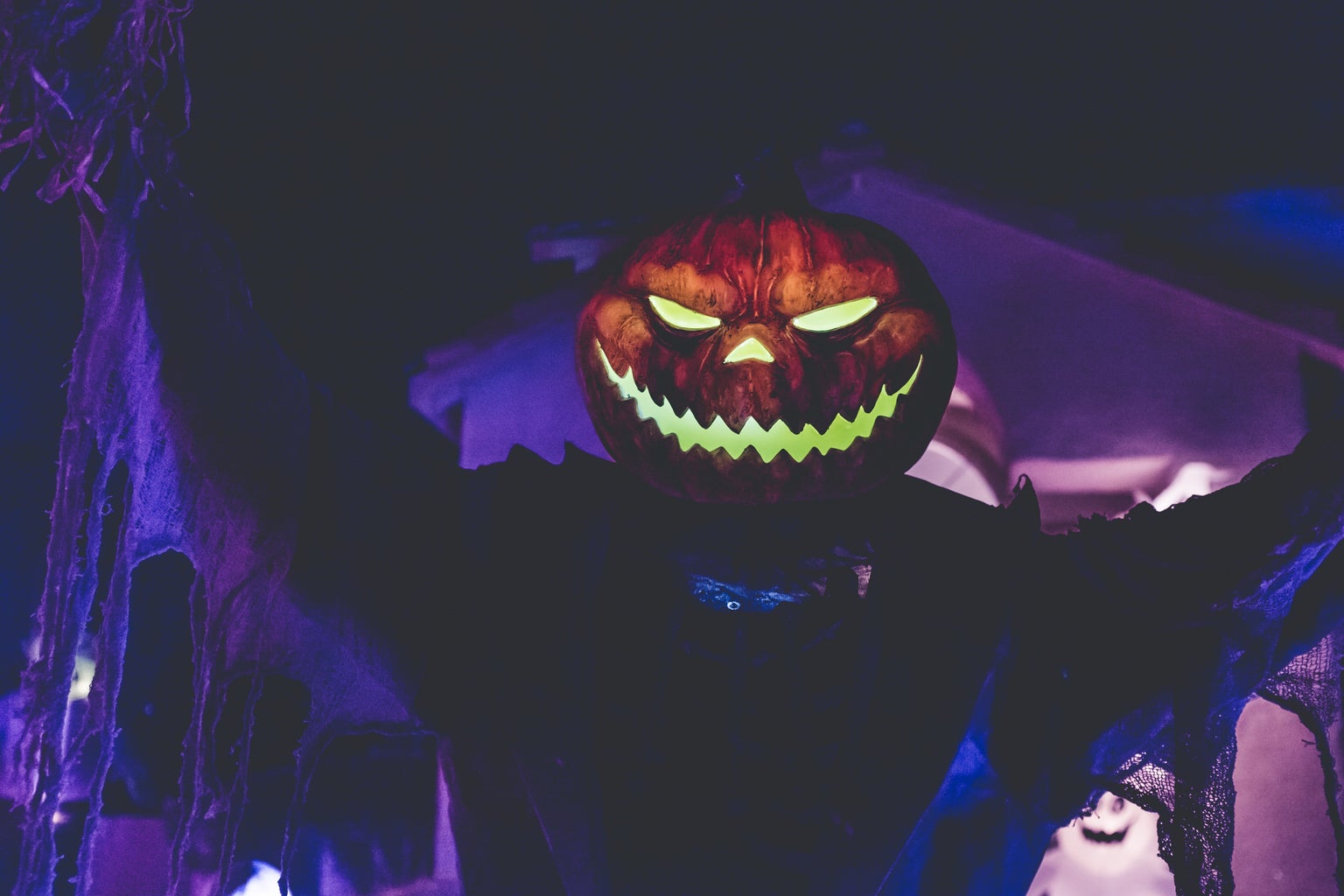With people rushing to the theaters to watch Michael Myers terrorize Laurie Strode for the umpteenth time in the new Halloween Kills movie, it’s only right to step back and really evaluate the role of the final girl in horror films.
Let’s be real, there’s no way I would be able to make it to the end of a horror movie.
I know the basic rules: keep your phone charged, don’t investigate strange noises, try to go out the door and not up the stairs, etc. etc. but to truly become a “final girl”, there’s a lot more I’d have to do than elude the killer.
but What makes a “final girl”?
A “final girl” is a common horror trope that became more and more popular as more horror/slasher films came out. The title bestowed upon a heroine who survives a horror movie, the last one standing. She’s the one who escapes or outguns the bad guy, and she’s the one who gets to live to tell the tale.
The final girl is smart, vigilant, and quick on her feet. Traditionally, in the older horror movies, she’s not like her friends because she has a strong sense of moral superiority. She’s a good girl, a pretty girl who’s unaware of how pretty she is, and, most of all, she is innocent. She doesn’t have premarital sex, she doesn’t smoke or drink, and she is rewarded for it by getting to live. The older the movie, the more likely she’s like Psycho‘s Lila Crane and is a damsel in distress that needs to be saved by a man after a night of horrors. Or, she is kept alive so that the movie ending is left ambiguous, only to be killed in the sequel like Alice Hardy in Friday the 13th.
a win for women?
Initially, the final girl trope walks a very thin line between being feminist and sexist. At first glance, it might seem empowering to have a young woman as the one with the wits required to best the killer but, in order live longer than the men, she nearly always has to repress her sexuality while the women who aren’t so conservative are killed off.
For example, in the beginning of Halloween (1978), Jamie Lee Curtis’ character, Laurie Strode, is introduced dressed in a turtleneck and a skirt going down to her ankles. While this might be provocative in the eyes of Edward Cullen, Laurie also makes it a point to mention that she’s “too smart” to date and that she’s babysitting while her friends are out having sex and getting drunk (and getting murdered by Michael Myers). Long story short, the promiscuous girls died and the virgin lived.
There are more cases of this bias in horror movies. Alice Hardy in Friday the 13th (1980) is also strongly desexualized. The scene that comes to mind is when her and her friends are playing strip monopoly, and she is the only one who keeps her clothes on. Another is Sally Hardesty from Texas Chainsaw Massacre (1974) who is predominantly the ‘good girl’ of the group, shown at the end as a new woman.
an ode to sidney prescott
Okay, okay, I love Scream for more than Matthew Lillard, and that’s because Sidney Prescott is one of the best “final girls” in cinema.
Scream (1996) features a group of teens who are (for the first time) self-aware of what it takes to survive a horror movie. The characters are well aware of the rules they ought to follow to survive but break them because they’re normal teens and the rules outlined by Randy Meeks are mostly satire. After all, the rules are gone over while all the characters are shown breaking them.
Sidney, despite being the sole survivor throughout the five Scream movies, does not fit into that morally innocent box that past final girls were put into.
Right from the start of the movie, Sidney establishes herself as an assertive young woman by punching a reporter for exploiting her story. Iconic, yes, but also incredibly justifiable and admirable because Sidney never downplays her anger, nor can she be written off as a victim and a victim only. More than that, she’s no different from her friends in breaking the above horror movie rules. She loses her virginity, and survives!
What makes Sidney even more likable is that she’s saddled with (potentially) the worst boyfriend in horror movie history, Billy Loomis. Throughout the movie, Billy dismisses Sidney’s trauma, pushes an R-rated relationship on her, countlessly manipulates her, and– oh yeah!– reveals himself as Ghostface shortly after she’d just slept with him. Instead of falling victim to him, she keeps a sense of humor and disguises herself as Ghostface, calls him like he called her, stabs him twice in the chest, and then shoots him in the head.
Despite the betrayal, Sidney shapes up and kicks Billy’s ass all while making history by breaking what the final girl traditionally is.
Subvert the trope
Now, enter a new age of horror movies.
Since Scream, there have been a series of horror movies to come out featuring strong, independent women who are both likable and relatable. The role is forever changed and it’s growing more and more feminist by the movie. Sure, the trope still exists, but in movies like Ready or Not (2019), the trope is hilariously subverted to the point where Grace literally destroys the patriarchy (of her in-laws’ family). Take any recent horror movie: A Quiet Place, Midsommar, Happy Death Day, and you’ll see more creative characters with thought-out motives. You’ll see protective mothers, women trying to overcome trauma, students fighting fate, and even a sprinkle of revenge for the sake of revenge.
Just to emphasize how far the “final girl” trope has come, let’s look at Halloween Kills. Halloween Kills is the latest installment in the Halloween franchise, and it’s intentionally feminist compared to the first movie in the series. Laurie Strode is back and the film takes place 40 years after surviving Michael Myers. She’s portrayed as a badass grandma who bands with her well prepared daughter and granddaughter to take down Michael once and for all. She’s no longer the helpless babysitter, that’s for sure.
While the role women tend to play in horror movies still isn’t perfect, the shift of final girls has certainly gotten better and far more interesting for viewers. I, for one, am eager to see more of the modern final girl in upcoming horror movies.



